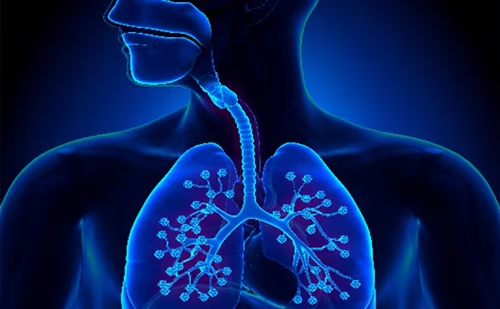Obstructive sleep apnoea (OSA) is characterized by recurrent upper airway obstruction precipitating variable degrees of recurrent desaturations, sleep fragmentation and increased autonomic stimulation. As the global burden of obesity continues to rise, so too has the prevalence of OSA.1 Although OSA is known to be more common in men and older adults, it is now recognized that women have been historically underdiagnosed, probably because of a lack of classic symptoms and a lower degree of snoring.1 Even in the presence of more typical symptoms, women are less likely to be evaluated by a sleep specialist.2
Similarly, OSA in pregnancy is often missed, as symptoms of increased fatigue and sleepiness reported by pregnant women are often attributed to their current gravid state.3 Estimates of the prevalence of OSA during pregnancy vary widely, but studies have shown an increased prevalence among those with a greater baseline body mass index (BMI) and with greater maternal and gestational age. A study that performed first- and third-trimester polysomnograms on 105 pregnant women found that the prevalence of OSA more than doubled in the later stages of pregnancy (10.5% versus 26.7%).4 Recent studies have revealed the association between untreated OSA and pregnancy-related complications, with the potential for long-term health consequences for both the mother and child.5
Screening methods for detecting OSA are highly sensitive in stereotypical older, obese, and male patients but lack generalizability to the OSA population, including pregnant women.6 Indeed, with increased recognition of different symptomatology and OSA endotypes in younger, non-obese, and female individuals, it is becoming increasingly obvious that previously established screening tools, such as the STOP-Bang questionnaire, tend to exclude populations that deviate from the ‘classic’ OSA phenotype. Despite the fact that untreated OSA in pregnancy can be associated with multiple adverse outcomes, there remains a lack of formalized guidelines for the screening, diagnosis and subsequent management of sleep-disordered breathing in this cohort.
The aim of this review is to highlight the association between OSA and pregnancy, the potential health consequences of OSA in this population, and the need for improved guidelines with regard to the screening, diagnosis and treatment of OSA in pregnancy. A literature review was performed to identify recent research efforts in this field and potential areas for future advancements. The Ovid Embase database was searched for conference abstracts and published randomized control trials in the English language that looked at the diagnosis and management of sleep apnoea in pregnant individuals.
Obstructive sleep apnoea in women
OSA is a heterogeneous disease with predisposing anatomical and non-anatomical processes: airway collapsibility, arousal threshold, loop gain and upper airway muscle compensation.7 The relative contributions of each trait differ in women versus men, and this may contribute to the differing presentation and under-recognition of OSA among women, as well as to the underdiagnosis during formal evaluations. For example, women have a greater propensity for apnoeic events in rapid eye movement (REM) sleep, which may not be reflected in the overall Apnea–Hypopnea Index given the disproportionately low proportion of time spent in that sleep stage. Compared with men, OSA in women is associated with a lower degree of airway collapsibility measured in non-REM (NREM) sleep, which contributes to lesser disease severity in NREM sleep stages. The relatively high contribution of the REM-related OSA burden in women is thought to be due to a lack of the protective mechanisms that exist in NREM sleep (e.g. pharyngeal muscle activity) rather than to an anatomical burden, which would affect all sleep stages.8
Similarly, women with OSA tend to have a lower arousal threshold, with relatively less oxygen desaturation compared with men; a 4% desaturation index may therefore overlook a substantial number of respiratory events that do not meet this criterion.8 Furthermore, REM-OSA is independently associated with adverse events such as hypertension9 and, as such, is of particular concern in pregnant women, given the increased prevalence of pre-eclampsia with both OSA and hypertension.
Obstructive sleep apnoea in pregnancy
Pregnancy leads to a wide array of physiological changes that modulate the risk of OSA and are dynamic throughout gestation.4 Pharyngeal narrowing during pregnancy results in an increased propensity for airway collapse (thought to be due to gestational weight gain and an enlarged neck circumference) and increased fluid retention with subsequent pharyngeal oedema. This increased anatomical burden promotes apnoea in previously at-risk individuals.10 In later trimesters, the growing uterus can cause diaphragmatic elevation, with subsequent reductions in functional residual capacity leading to reduced caudal traction on the above airway, which ultimately lessens the degree of extraluminal pressure required for airway closure.11 Sleep fragmentation in pregnancy due to nocturia and low back pain may also predispose OSA, potentially by reducing pharyngeal dilator activity.12
These processes can precipitate new OSA (‘gestational OSA’) or worsen symptoms in those previously diagnosed; furthermore, the subsequent uncontrolled sleep-disordered breathing has dangerous implications for both mother and child. Maternal OSA has been associated with gestational hypertension, pre-eclampsia and gestational diabetes.13 Not surprisingly, the birthing process itself can also be complicated: caesarean deliveries, increased length of hospital stay, cardiomyopathy and in-hospital mortality are all more prevalent in women with OSA.14 Foetal complications include low birth weight, preterm delivery and admission to the neonatal intensive care unit.15
Despite these associations and the increased risk of OSA in pregnancy, there continues to be a lack of adequate screening and diagnosis of OSA in pregnancy. The reasons for this are thought to be a lack of awareness, lack of adequate screening tools and lack of availability of polysomnography (PSG). In addition, the absence of large-scale trials demonstrating improved outcomes following treatment in this cohort promotes a lack of urgency and further diagnostic delays.
Known risk factors for OSA in pregnancy have been established and include increased maternal age, multiple gestation, chronic hypertension, pregestational diabetes and obesity,16,17 particularly severe obesity.18 Studies that have looked at the use of screening tools, such as the STOP-Bang and Berlin questionnaires, in pregnant patients have demonstrated mixed results, with lower predictive values observed when used in the first trimester.6 A recent meta-analysis that looked at predictors of OSA in pregnancy found that BMI, age and snoring were the most consistent predictors across all trimesters;19 however, many prediction models lack external validation, and their applicability to higher-risk individuals remains uncertain.
If a formal evaluation for OSA is pursued, the diagnosis is often further hindered by the poor availability of sleep specialists and delays in obtaining a sleep study. A study looking at the effect of a specialized Sleep Pregnancy Clinic found that the clinic increased OSA referrals and diagnosis but that completion rates of OSA testing following referrals remained low.20
Management of obstructive sleep apnoea in pregnancy
Once diagnosed, the management of maternal OSA is not clearly defined. Continuous positive airway pressure (CPAP) is the treatment of choice in the general population, but data on CPAP use in pregnancy are limited. Alternative treatment modalities, such as mandibular advancement devices,21 have also not been studied in pregnancy, although extrapolating from studies in the general population would suggest that any measure taken to decrease the degree of hypoxic burden would be worth investigating.22,23 Additional strategies, such as positional therapy, have been associated with a reduction in OSA severity among the pregnant population;24 conservative strategies such as this could be considered when CPAP is not immediately available or feasible.
Current practice generally mirrors that of the non-pregnant population, with CPAP recommended as first-line therapy, indicated for those with moderate to severe OSA (defined as an Apnea–Hypopnea Index of ≥15/hour) or with mild OSA associated with significant oxygen desaturations or certain comorbidities.25 Patients with known OSA prior to pregnancy should continue with CPAP therapy, and auto-titrating CPAP may be of particular value if the severity of OSA worsens with increased gestational age and higher pressures are required.26 Several small studies investigating CPAP use in pregnancy have demonstrated its safety, with no evidence of maternal or foetal adverse effects.5 In addition, two recent studies have reported that CPAP is associated with a reduced risk of hypertensive disorders during pregnancy.27,28 Of note, these two studies involved very different populations with regard to age, BMI, symptoms and comorbidities. The fact that the effectiveness of CPAP was demonstrated in both studies despite this variability is particularly promising.
Given the increased risk of operative delivery and heightened maternal risks during delivery, high-risk individuals should be evaluated by a sleep physician prior to delivery. Surgical management in maternal OSA has been extrapolated from data surrounding perioperative care in the non-pregnant OSA population.15 In addition to CPAP use, guidelines from the Society of Anesthesia and Sleep Medicine advocate for minimal sedation and increased postpartum monitoring.29 Following delivery, OSA precipitated by pregnancy may improve in some individuals, although the exact timeline and degree of improvement are unclear.30 One study recommends that those with severe OSA should continue CPAP therapy and have a repeat PSG once their weight has reduced to within 10–15% of their baseline.25
Conclusions
A lack of consistency in screening methods and their effectiveness has delayed the implementation and universal acceptance of formal screening guidelines for OSA in pregnancy. The protocols that have been studied have varied in their predictive value and sample characteristics. Some authors recommend that only pregnant women with the combination of excessive daytime sleepiness, loud snoring and witnessed apnoeas should undergo an evaluation for OSA via PSG.30 Others believe that, until more concrete guidelines exist, screening should include those with any risk factors, including obesity, hypertension and previous pregnancies with unexplained intrauterine growth restriction.31
Given the increasing delays in receiving a diagnostic PSG and the risks of untreated OSA within this cohort, some authors have advocated for the use of home sleep studies,26 although these should typically follow an evaluation by a sleep specialist. As new data are beginning to reveal the potential for CPAP therapy to mitigate the known health complications of OSA during pregnancy,27 increased urgency should be placed on finalizing definitive guidelines, as there is a clear opportunity to reduce morbidity in this cohort.
There is a need for improved screening, diagnosis and subsequent management of OSA in pregnancy, particularly among high-risk individuals (including those with hypertension, obesity and advanced maternal age). Recent screening tools have displayed some promise, but their universal applicability is not yet clear. Maternal OSA is associated with gestational hypertension, pre-eclampsia and gestational diabetes, in addition to foetal complications such as preterm birth. Unmanaged peripartum OSA can result in significant cardiac complications and increased maternal mortality. Recent data have suggested that CPAP may help to prevent these events; however, randomized controlled trials are required to fully determine its efficacy.







